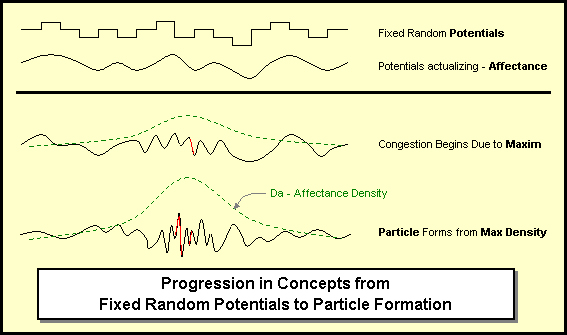Ok, here goes.
Gravity is an “attractive” “force” between bodies, and the strength of the attraction is proportional to the mass of the bodies. The reason for this attraction is not understood in traditional physics, but various ideas range from Einstein’s “fabric of space-time” idea (which is more like a description rather than an explanation) to “gravitons”, supposed elementary particles. Other physicists admit they don’t know what gravity is, and assume it will be figured out later, perhaps through continued development of quantum physics.
I don’t know enough about the traditional ideas for gravity in physics, so if anyone else can comment on this I would appreciate it. We can note that gravity and force of acceleration behave the same, and are indistinguishable from one another in the right circumstances (as Einstein said).
James’ RM explains gravity by the fact that every body is emitting affectance, elementary “wavelets” that are absorbed into other bodies. When affectance is absorbed into a body it slightly shifts that body’s center of mass, being that now an additional little bit of mass has been added to one side (the side where the affects were received). Think of it like a ball on a table: the ball is stationary and not moving, but if suddenly a little bit of mass was added to one side of the ball it would roll slightly in that direction. Likewise, to use Earth and the Sun as an example each object is emitting affectance, and some of this is absorbed by the other body. This means that the points on each body that are oriented toward the other are receiving more affectance than those points on each body which are oriented away from the other, therefore these points facing the other body will gather more increase in mass and thus tend to “move” in that direction (move toward the other body).
If bodies are emitting and absorbing affectance in a more or less unchanging ratio of the one to the other (so as to keep the overall mass of the object largely unchanged), we can assume that affectance is emitted from all sides of the object equally, at least so far in my understanding of RM I can see no reason why the emitting of affectance would be unequal across the surface of a body. However, the side of a body (Earth) facing another nearby body (the Sun) would be receiving larger amounts of affectance than other sides of that body. Given that bodies like to maintain the same amount of mass (it is my understanding that this is a basic claim of RM, I may be wrong about that?), more affectance will be released in proportion to the amount of affectance gained through absorption. Is this increased affectance emitted at a particular location on the body, with respect to the side of the body receiving affectance from the other body?
If affectance continues to be emitted by Earth equally across all of Earth’s surfaces, only a very small portion of this would be absorbed by the Sun. So: Earth can receive X increase in affectance from the Sun, and Earth will emit an equal X amount of affectance in compensation so that Earth’s overall mass remains the same. However, an amount very much smaller than X of that affectance emitted thusly will get back to the Sun (most of it will be sent out into distant space). However, the closer two objects are the more available surface area exists for those two objects to interact via the exchange of affectance. Therefore as bodies comes closer the amount of affectance absorbed from the other (and thus also the amount of affectance emitted in compensation for this new increase of mass) increases, leading to an increased extent of change in center of mass of each object (a greater change across the same unit of time). This translates into velocity increase of motion the closer two objects are to each other.
Additionally, it must be noted that objects do not always “meet” as a consequence of gravity. For instance, a comet will get close to Earth, “wanting” to get to the Earth, but will shoot around and then away from Earth instead. This demonstrates that the power of gravity is finite, and can be overcome by an opposed power, in the case of the comet that power is the inertia of the comet. If inertia is high enough an object will shoot around rather than into another object, and then move away rather than back, because the attractive tendency of the two object’s gravity is less than the force of inertia of the object moving away. Of course gravity is still “pulling on” the comet, thus as it moves away from Earth its velocity is slowing down. Logically, given no other factors, the comet would eventually reach a point distant from Earth where its velocity would reach zero and then slowly begin to reverse, as minute affectance from distant Earth began to shift its center of mass slightly and now there is no inertia with which the comet might compensate for this fact.
One more thing: given this theory, gravity must “travel” (propagate) at the speed at which affectance travels. Affectance in “vacuum” of space travels at MCR, as far as I understand RM, therefore gravity would also travel at MCR. This would also be the speed at which massless particles travel, for example photons. Thus gravity should propagate at c in a vacuum and then “slow down” when propagating through a medium, just as is the case with the observed speed of light.






